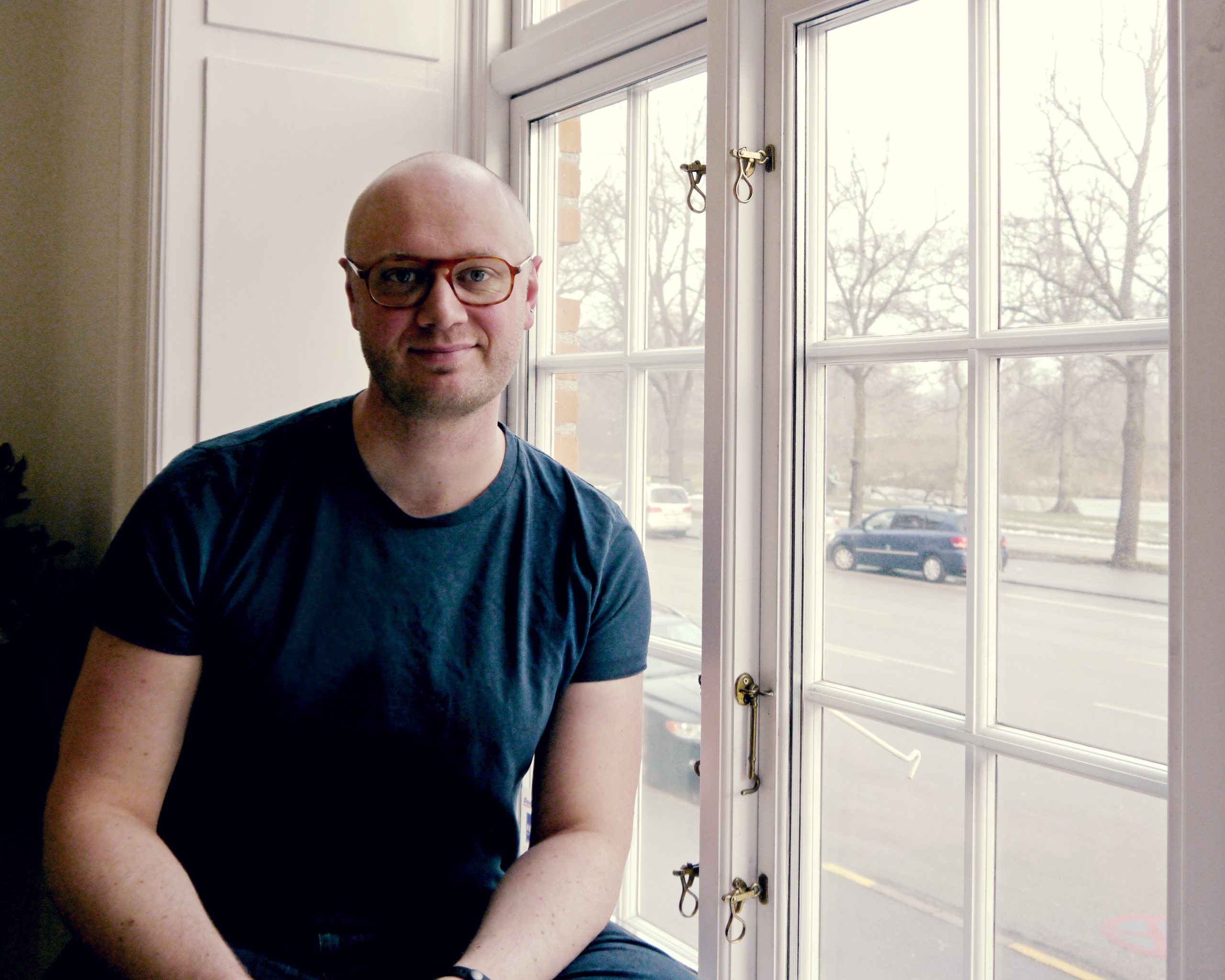You don’t usually hear content editors praising the usability of their CMS, but still a lot of effort is spent on designing the user interfaces. We interviewed designer Rasmus Skjoldan from Copenhagen to hear about the current trends and major challenges in CMS user interfaces. Are things getting better? What are the main problems in making CMSs easier to use? Are the CMS vendors focusing on the right things?
North Patrol is a consulting firm specialized in the design of digital services and information systems. We shape ideas into a vision and service concept, find the best architectural and technological solutions, design a functional user experience, and compete to find the ideal partner for implementation work. We do not sell implementation projects, nor do we sell licenses; we are genuinely on the side of the customer.

This article is a part of CMS selection article series by North Patrol.
North Patrol helps customers to make smart technology decisions and find the best implementation partners. Typically, we facilitate prestudy projects and evaluate vendors and proposals. Most of our clients are large companies headquartered in Finland.
Rasmus has been designing CMS user interfaces since 1999 and is currently finalizing the user interfaces of the brand new TYPO3 Neos CMS. Rasmus is also a member of CMS Expert Group Europe. TYPO3 is originally a Danish CMS that has an active open source community and a large user base especially in German-speaking countries but also in other countries, such as Denmark.
The original TYPO3 CMS has a long history - dating back to 1998 — it was one of the pioneers in enabling extensions to be added to the CMS core. In recent years, the development of TYPO3 has been focusing on solving the needs of enterprise scale websites. The upcoming new TYPO3 Neos version is one of the most interesting redesigns of CMS products on the market in the last few years. One of its most interesting features is a so-called “Raw content” mode that enables editors to focus only on content instead of design and styling.
Key points of Rasmus:
- CMSs have largely been developed based on internal sales strategies or technical possibilities. There hasn’t been a very clear focus on what a CMS is supposed to do as a system.
- A lot more attention should be paid to enable great authoring experiences. Content creation in itself is often acceptable but e.g. re-arranging larger bodies of content structures is typically nightmarish.
- Complete separation of content from design doesn’t work for everyone. For news organizations it can work because they have highly trained editors. But for e.g. regular company information that concept is unnecessary complex to work with.
- There are several ways of using a CMS - just like any other software application. That’s why the interface has to be generic enough so it works in all scenarios.
How would you describe the history of CMS user interfaces?
For a long time, no one asked content authors what they wanted and needed. Developers or CMS managers just decided for them. The industry was focused on the “management” part of CMS for a long time - while the “authoring” part was given too little attention.
Also, the CMS industry has always been eager to expand the scope of the CMS. In the past it went to crazy lengths sometimes. Even invoicing functionalities have been seen inside CMSs. That has been one of the main problems - that CMSs tried to be multipurpose tools that wanted to solve a bunch of very different problems. This problem still exists.
Even today, people try to tackle very different kinds of problems inside a CMS. For example, social media management is one of the things that I don't think really belong inside CMS. There are other good tools for that. It’s a very different issue to solve.
Part of the challenge is that CMSs are often designed to be easily sellable. The sales strategy too often defines features. There hasn’t been a very clear focus on what a CMS is supposed to do as a system. Sales has typically had a lot of influence in CMS development. And usually the people buying CMSs are not the same people who actually use them. That’s one of the main problems from the UX point of view.
How do you see things right now?
CMS vendors are still very technical organizations. Web-focused UX'ers that want to work in such places are really hard to find. The UX'ers that know how to work with the web medium so often prefer working with actual website projects. We're a very small group of UX'ers that specialize in CMS interfaces.
Content creation in itself is often acceptable but e.g. re-arranging larger bodies of content structures is typically nightmarish. Especially when you add language variants or want to do personalization.
I’m also a big believer in starting the content authoring process inside the CMS - instead of using Microsoft Word to create text. I think starting elsewhere than inside some kind of central content management storage system is a fundamentally flawed process. People have a really hard time visualizing things in advance. To me, it's better if authors can create content within some form of connection to the visual environment where it will be published. That's why I think better previews are so important. Multichannel content publishing is here but that doesn't mean that organizations cannot prioritize their channels and let their authors finetune content experiences in less abstract views than by endless form filling.
I totally understand that content and design must be separated but complete separation of content from its presentation doesn't work for everyone. For news organizations it can work because they have highly trained editors. But for e.g. regular company information that concept is unnecessary complex to work with. Content authors need to understand the context of their content. That is why TYPO3 Neos has put a lot of development time into creating the Preview Central.
A lot of problems come back to the fact that CMSs are still multipurpose tools that lack focus. This makes it hard to plan great UX.
Whom are you designing for? Can you describe a typical content author?
Since we are mostly working with larger clients, content editors typically have a lot of content that already exists and their job is to moderate or stage that content. So managing sites and building its structure is important. Many of the content editors also produce content themselves. My focus is both on making content creation and moderation a lot better.
I’m often surprised about how content editors work. They do things I never imagined. There are several ways of using a CMS - just like any other software application. That’s why the interface has to be generic enough so it works in all scenarios.
I’ve definitely been thinking about doing more specialized CMS interfaces - for example by separating the writing experience and structuring experience. And some CMSs are almost doing that. But the reality for widespread enterprise CMS products will be a combination of authoring and structuring, also in the future.
In the future, what kind of capabilities you would like to see more inside CMSs?
Prototyping of new templates and designs should definitely happen inside the CMS in a staging environment. Prototyping new stuff would work well here because you already have both content and templates there. It would make it possible for teams to better collaborate on e.g. revised navigation for large bodies of content or to improve the redesign process by seeing changes with real content. In the agency I work, we do this quite a lot and it gives us huge advantages when we can manipulate templates and directly see the changes to the mapped content coming from the CMS.
I'm thinking about how to improve this process from the side of the CMS in Typo3 Neos - to enable information architects to more directly see how their navigational systems are going to explode in responsive templates for example. Too often, people are struggling with fake content in Axure or similar prototyping software. It can quite easily be done inside the CMS instead.
ABOUT TYPO3 AND ITS PARTNER NETWORK:
TYPO3 is originally a Danish CMS that has an active open source community and steadily growing user base mainly in Germany, but also in other countries, such as Denmark. Partner network and the availability of professional services are concentrated to Germany and its neighboring countries - yet, you can also find agencies in Asia and in the US. Examples of TYPO3 service providers: MOC (Denmark), Infield Design (US), AOE (Germany / US), TechDivision (Germany), DKD (Germany) and 3rd Eye Vision (UK).


